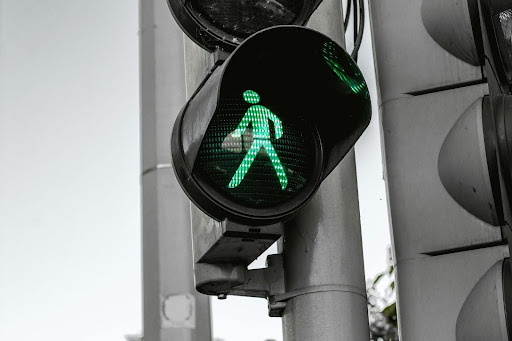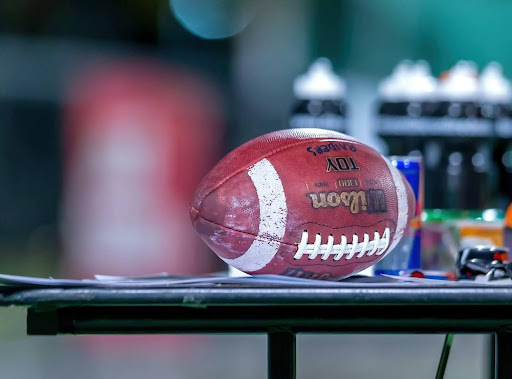Why Accident History Matters More Than Ever
The used car market is full of potential—and pitfalls. Behind the glossy photos and smooth sales pitches, many cars carry hidden baggage. That baggage? Previous accidents. Whether it’s a minor fender bender or a collision with major frame damage, what happened in a car’s past can seriously affect your future as a buyer.
But how to check if a car has accident history? Before you put down your money, make sure you do a quick accident history check through platforms like Vingurus. This step can mean the difference between driving off in a reliable vehicle or inheriting a mountain of trouble.
1. The Real Cost of Not Checking Car Accident History
Some buyers skip checking a vehicle history report to avoid paying a few dollars. But this small savings often leads to expensive regrets. Cars involved in serious accidents can suffer from alignment issues, electrical glitches, and safety system failures—even years later. Worse, some are sold without disclosing damage, putting buyers at risk.
2. What Counts as an Accident?
Accident doesn’t just mean a totaled vehicle. It includes:
- Minor collisions that required cosmetic repairs
- Airbag deployments
- Frame or structural damage
- Water or fire damage (often hidden)
- Incidents reported to an insurance company
Even when a car drives well post-repair, the long-term impact of accidents on value and safety can be significant.
3. Vehicle History Reports: The First Line of Defense
A vehicle history report is your best friend when purchasing a used auto. These reports provide details on:
- Reported accidents
- Salvage title history
- Repair records
- Insurance total losses
- Past ownership
- Service logs and more
Accessing multiple reports gives you a fuller picture. If one report is clean and another shows damage, take that as a red flag.
4. VIN: The Fingerprint of a Car
Every car has a Vehicle Identification Number (VIN)—a unique 17-character code. Think of it as the car’s fingerprint. Use it to check national databases for accident history, open recalls, and title status.
5. Signs a Car May Have Been Damaged
Even without a report, your eyes can tell a story:
- Misaligned doors or body panels
- Uneven paint or overspray
- New parts in isolated areas
- Odd noises during a test drive
- Moisture or mildew smell (possible flood damage)
If anything feels off, assume the car might have been involved in an accident.
6. Salvage and Rebuilt Titles: Know the Difference
A salvage title means the car was considered a total loss. A rebuilt title means it was repaired and re-certified. Both titles stay with the vehicle forever, affecting resale value and insurance company policies.
7. Where to Get a Reliable History Report
Services like Carfax, Vingurus, and the National Insurance Crime Bureau can provide vehicle history reports. Some offer free checks using the license plate or VIN. Paid services tend to deliver more thorough data, including records from auctions and repair facilities.
8. What a Report Can Reveal
A quality report can uncover:
- The date and severity of previous accidents
- Whether the car was repaired properly
- If airbags deployed
- Odometer log inconsistencies
- Multiple owners or quick turnovers (a red flag)
- Whether the vehicle is flagged as a lemon
Even a free check can reveal useful data points before you proceed to buy.
9. What’s the Risk of Skipping the History Check?
Failing to check a car’s history may result in buying an unsafe or overvalued vehicle. Hidden frame damage compromises crash protection. Undisclosed repairs might mask deeper car issues.
10. The Insurance Angle
Once a car is reported to an insurance company as a total loss, that record lives on. Some sellers don’t disclose this unless asked directly. Only a vehicle history report exposes the truth.
11. Not All Accidents Are Reported
You might be surprised to learn that many accidents never make it into official records. Why? Some car owners pay out of pocket to fix damage instead of involving an insurance company. This avoids a reported claim—but also keeps it out of vehicle history reports.
This is especially common with minor fender benders or when the damage occurred on private property.
12. How to Detect Unreported Accidents
If a vehicle has been involved in an incident that wasn’t reported, you might still spot clues. Look for:
- Slightly mismatched paint colors
- Gaps in panel alignment
- Irregular welds or bolts
- Lack of service records for bodywork
Bringing a trusted mechanic or body shop expert to inspect the car can be a smart way to uncover hidden history.
13. Private Sellers vs. Dealers: Who’s More Transparent?
Both private sellers and dealers may hide accident history. However, reputable dealerships often provide vehicle history reports by default, especially when state laws require disclosure.
Still, never assume you’re protected—ask for documentation and check it yourself.
14. The Role of Title Branding
A car’s title holds valuable clues. Brands such as “salvage,” “rebuilt,” “flood,” or “lemon” can instantly flag damaged or unsafe vehicles. If the title has changed hands frequently, that could signal persistent issues the sellers want to offload quickly.
Always review the full title history, especially during purchasing.
15. Accident Severity: Not All Damage Is Equal
There’s a big difference between a scratched bumper and a bent frame. Some accidents cause superficial damage, while others permanently affect the vehicle’s structural integrity.
Look for reports that list severity scores or damage zones. The higher the score, the more the car may be compromised—even if it looks great today.
16. Service Records Add Critical Context
Accident history is only part of the picture. A well-maintained used car might have been damaged, but timely and expert repairs can restore its reliability. In contrast, a car with spotty maintenance—even with a clean accident record—may present more trouble.
Prioritize cars with full service logs, frequent oil changes, and routine maintenance.
17. Protect Yourself with a Pre-Purchase Inspection
Before you purchase any used auto, get a pre-purchase inspection. A professional mechanic can spot evidence of past repairs, frame damage, or components that were poorly replaced. This step costs far less than dealing with car trouble later.
18. When to Walk Away
If a seller won’t let you see a vehicle history report, or you find conflicting reports, consider it a red flag. Transparency is key in the used car market. Buyers have every right to access the car’s history before putting down cash.
19. Online Tools for a Quick Check
Modern tools make accident research easy. Start with a quick accident history check using Vingurus and go deeper if needed. Many platforms let you run a VIN, license plate, or title number for fast results.
In just minutes, you can see if the vehicle has been reported in any accidents, what kind of repairs were made, and whether it’s safe to drive.
20. Mistakes Buyers Make—and How to Avoid Them
Buyers sometimes get emotionally attached to a car before doing their research. That emotional investment can cloud judgment.
Don’t skip the basics:
- Always get multiple vehicle history reports
- Ask for repair documentation
- Review the title closely
- Look for gaps in the log
- Check the VIN, not just the license plate
21. Accidents Aren’t Always a Dealbreaker
Some cars with minor accident history are still a good value. If repairs were done properly, and you’ve reviewed the records, you might get a solid vehicle for less than market price. The key is transparency and documentation.
22. The Bigger Picture: Safety and Resale
Think long term. A car with an unclear history can be hard to resell. More importantly, it can put lives at risk. Brakes, airbags, and crumple zones all rely on a structurally sound design. If the car was poorly repaired after a crash, you could be driving an unsafe machine.
23. Buyers Deserve the Truth
If you’re buying a used car, you have every right to know its past. Sellers may try to distract with low mileage or fresh paint. But what matters most is what’s hiding beneath the surface—and only a thorough history check can reveal that.
Conclusion: A Smarter Way to Buy
Purchasing a used car doesn’t have to be risky. By using tools like vehicle history reports, checking the title, and inspecting the car thoroughly, you protect your wallet, your peace of mind, and your safety.
Accidents happen. But by doing your homework, you’ll avoid unsafe autos, spot major accidents, and find a reliable ride that’s worth every dollar.
FAQ
1. How accurate are vehicle history reports?
While generally reliable, reports can miss accidents not reported to an insurance company. Always pair the report with a physical inspection.
2. Can a car be involved in an accident and not show up on the history?
Yes. If the accident was never reported, it may not appear. This is why it’s crucial to check for physical signs and review service records.
3. What’s the biggest red flag in a vehicle history report?
A salvage title combined with missing repairs or rapid ownership changes. These signs can point to long-term trouble.
4. How can I get a free accident report?
Some providers offer a free check using the license plate or VIN. For in-depth info, paid platforms give more thorough data.
5. Should I avoid all cars with an accident history?
Not necessarily. Focus on the severity of the accident, quality of repairs, and availability of documentation. Some cars bounce back just fine.
























